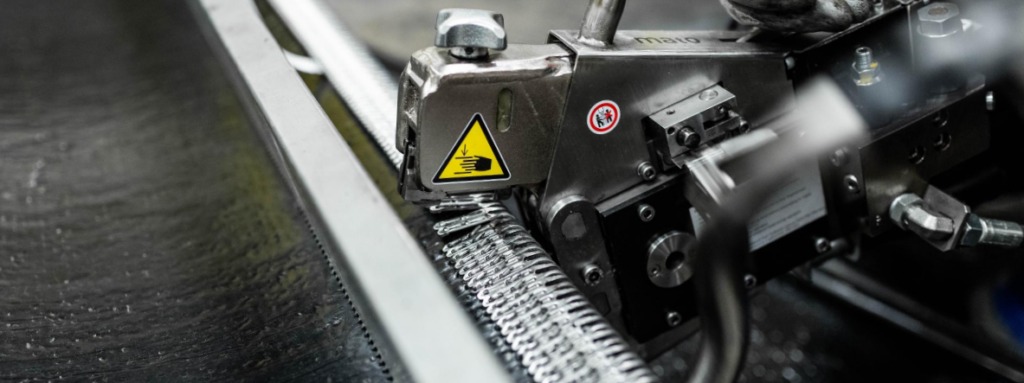Splicing heat resistant conveyor belts

There are three primary methods of making conveyor belts endless – mechanical fasteners, cold vulcanisation and hot vulcanisation. Under the right circumstances, especially for short, lower tensile strength applications, the use of mechanical (metallic and non-metallic) fasteners can be a quick and effective method of joining a rubber conveyor belt. However, it is important to be aware that the disadvantages often outweigh the advantages, which can include issues with scrapers, higher noise levels, drum and pulley wear and limited splice strength efficiency. Most significantly of all and contrary to the claims of some manufacturers and retailers, metal fasteners should never be used on heat-resistant belts. Although the fastener itself may be able to withstand high material temperatures, the combination of the fastener and the belt itself does not work. This is because the effect of high-temperature material on the carcass, which is made of thermoplastic materials such as polyester and polyamide, is a weakening/softening of the carcass material resulting in a reduction in the strength of the joint. This weakening of the carcass causes the mechanical grip to loosen, bolt holes to widen and ultimately, joint failure. Eventually, over time, the thermal effect on the carcass materials will also reduce its overall strength. Although this is an effect that takes place throughout the whole of the belt, it is especially detrimental to what is an already loosening fastener grip.
As with the use of mechanical fasteners on heat-resistant belts, the use of cold vulcanizing materials is also not recommended because splice joints made in this way begin to lose strength from about 80 deg. C. onwards. High heat-resistant rubber compounds usually have EP(D)M as a base polymer and the adhesion levels of EP(D)M and cold vulcanizing materials are poor. Hot vulcanisation is therefore the most reliable and effective method, with finger splicing rather than step splicing being the best option. Although they may take about 30% longer to make, the enormous advantage of finger splice joints is that they retain up to 90% of the belt’s tensile strength. By comparison, a 2-ply step splice only retains a maximum of 50% and a 3-ply step joint only achieves a maximum tensile strength of 67%. Finally, it is usually best practice to use splicing materials supplied by the manufacturer of the belt so that the rubber used in the belt and in the splicing materials are as close to matching as possible. The cost of making the splice is a small fraction of the cost of a system shutdown or the many thousands that have will have been spent buying and installing the belt in the first place. It surely makes no sense to try and ‘save’ a few hundred euros rather than use the most durable splice possible or by not having the work carried out by the most skilled service provider available.
